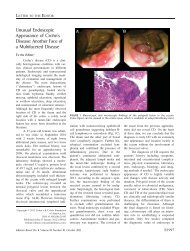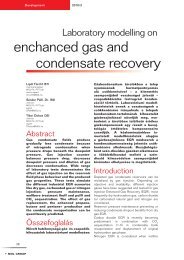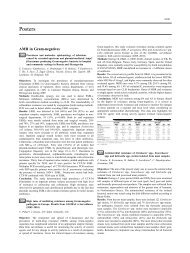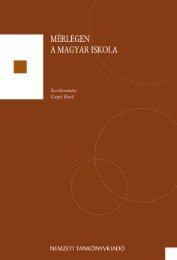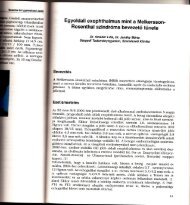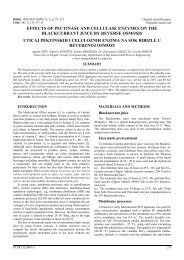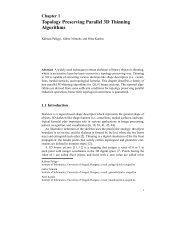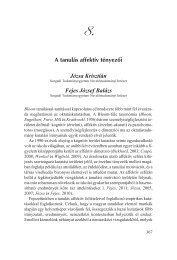View - ResearchGate
View - ResearchGate
View - ResearchGate
You also want an ePaper? Increase the reach of your titles
YUMPU automatically turns print PDFs into web optimized ePapers that Google loves.
Results<br />
During the past years (2000-2002), 50 filamentous fungi originating from different<br />
specimens were evaluated. Table I shows the origin and distribution of the isolates. No<br />
parallel isolates from the same patient were involved in the study.<br />
32 human isolates were cultured from specimens from the upper or lower respiratory<br />
tract: mucin from the nose, washing fluid from the paranasal sinuses or nose, specimens from<br />
the ears or thoracic fluid. 3 isolates were from the peritoneal fluid, 4 from the gastrointestinal<br />
tract, 3 from mucocutaneous samples and 2 from the genital tract. The most frequently<br />
isolated species were A. versicolor among the Aspergillus spp. and P. chrysogenum among<br />
the Penicillium spp. The 6 isolates from environmental samples were Epicoccum nigrum (1),<br />
Scopulariopsis spp. (1), T. citrinoviride (1), T. koningii (1), T. longibrachiatum (1) and T.<br />
pseudokoningii (1).<br />
These fungi were tested and evaluated for their susceptibilities to fluconazole,<br />
ketoconazole, itraconazole and amphotericin B by the Etest (Table II). 46 of the tested moulds<br />
(92%) were resistant to fluconazole, with MIC >256 µg ml −1 . The range of MICs for<br />
ketoconazole was wide: there were resistant strains with MICs >32 µg ml −1 among the A.<br />
niger, A. ochraceus and Cladosporium spp., while the lowest MIC values were obtained for<br />
the Trichoderma strains (0.008−0.5 µg ml −1 ). Two strains were resistant to amphotericin B<br />
with MIC values >32 µg ml −1 .<br />
For 10 selected isolates, the MICs obtained by the Etest were measured by using two<br />
different spore suspension turbidities. The MICs obtained after incubation for 48 or 72 hours<br />
are listed in Table III. For fluconazole, no differences were observed with the two inocula: all<br />
strains were fully resistant. For itraconazole, ketoconazole and amphotericin B, a 1- or 2-step<br />
2-fold dilution difference in MIC was seen for most strains with the exception of A. niger 2.<br />
6



